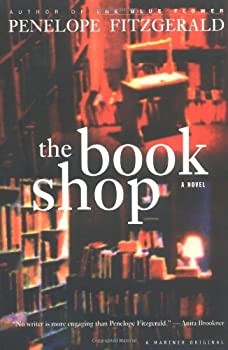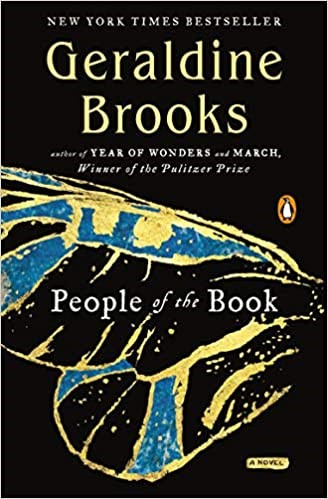A Librarian’s Summer Reading List
Posted by Jane Metters LaBarbara.August 24th, 2020
Blog post by Stewart Plein, Associate Curator for WV Books & Printed Resources & Rare Book Librarian
It may surprise you to learn that I read a lot of books about books over the summer. I didn’t intend to. It just happened that way.
As Mark Twain said, and I paraphrase, “a good book worth reading is a book worth reading again.” I wholeheartedly agree with that sentiment. I read three of the four books on my summer reading list for a second time and I am none the worst for it. In fact, I enjoyed reading these books again. Most of them I read when they were first published. One of the books I read was new to me, but had been available for a couple of years. I’ll save that one for last.
Given the current climate, with the many troubling realities of the ever changing news about the virus, the new sensations of working from home, the constant barrage of daily updates, and all the other things that trouble our world, I felt the need for something comforting, something I had read before and enjoyed, something that would remind me of a pleasant journey strolling through pages I had already traveled, and so, I embarked on a re-reading adventure.

The first book I re-read this summer was Penelope Fitzgerald’s The Bookshop. Fitzgerald is a British author, and her works are considered national treasures in her homeland. Fitzgerald has written a number of novels, all appealingly brief. The Bookshop is only 122 pages in length, and that was a point in its favor for this second go round. The novel was first published in Britain way back in 1978, but it did not make an appearance in America until 1997, when I first read it. Back then, I was working in a book shop downtown so I was very interested in it.
The book may be short, but Fitzgerald packs a lot in it. The story takes place in the 1950s, when the effects of World War II are still heavily felt in England, and there is little “extra” in everyday life. It centers around a young widow who moves to a new town with plans to start a bookshop. It seems a simple enough dream, and one that should bring something new and welcome to the townspeople but there are others who find her plans disruptive. The main antagonist is an aristocratic matron. She is so disturbed by the widow’s plans that she orchestrates other townspeople in various roles within the community to thwart the widow’s every move.
I won’t say more about the novel, but I will say that I have only read one other work of fiction that captures this level of cruelty, through societal means and methods, against another human being. That book is Bronte’s Wuthering Heights, a shockingly cruel novel.
In 2018, The Bookshop was made into a film starring Emily Mortimer, Patricia Clarkson, and one of my favorite British actors, Bill Nighy. In one of those rare instances, I found the film to be better than the book. Extraneous details were removed that were unnecessary in the novel, and new life was brought to the characters in such a way that added poignancy and drama. Both are highly recommended.

Next on my list of “read it again” titles was Easter Island by Jennifer Vanderbes, a book I first read back in 2003. I love to read first novels and this was a first that really appealed to me. I’ve always found the conundrum of Easter Island to be interesting. Who was responsible for the creation of the Moai – those massive stone heads spread across the island? How did the islanders carry off such a feat with simple tools? How were the Moai moved into place? There were other questions too. Why are there no trees on the island? Why is there little vegetation at all? How hard would it be to live there? I wanted to know and I hoped this book would tell me and entertain me at the same time. Reader, I am here to tell you it did!
The story interweaves two threads. Two stories of newlyweds, separated by nearly a century, experience the same trials. Both couples are scholars, both follow their research interests and Easter Island is at first, a haven. Neither relationship survives intact, but the events that transpire to tear them apart are full of pathos. Among the most compelling elements of the story to me was the discovery of the rongorongo, a type of hieroglyphic writing carved into wood fragments. This form of writing is completely original and it was discovered on Easter Island in the 19th century. The surviving glyphs are studied to this day. Although many scholars have attempted to decipher them, no one has. The rongorongo remains a mystery.
I found Vanderbes book to be exceptionally well researched and equally well written. It did indeed answer my questions and provide an excellent read, even for the second time. After all, 2003 was a long time ago! If you have an interest in archaeology and enjoy historical fiction, I recommend it.

I suppose no one will be surprised that Geraldine Brooks, People of the Book, was on my re-reading list. This is one of those books that many people have recommended to me and I’m glad they did. First published in 2008, People of the Book was definitely worth a second read. When the story opens, Hanna, a book conservator, has been brought to Sarajevo to examine an ancient haggedah, a Jewish text that describes the order of the Passover Seder, only this copy comes with mysterious illustrations.
As Hanna works through the text, she discovers bits of material that represent the life of the book, the many people and places that, when researched, will reveal its travels. A fragment of a butterfly wing found only in a specific geographic location, a cat’s hair that leads to the discovery of the artist’s technique, and wine stains that point to an historic moment in time, all of these things slowly reveal the book’s journey, chapter after chapter.
As a librarian, I have even used this book in a material culture class, where discussions center around the elements and materials that make up the book and how they point to the book’s origins, its moment in time. The names of previous owners, a flower pressed between pages, doodles and drawings, labels and bookplates, all of these things, when examined, can illuminate the life of the book to the student and the scholar.

Susan Orlean’s The Library Book, is the one book that I read for the very first time. You might be surprised that, since it was published in 2018, I might have had the opportunity to read it before this date, but no, I had not. There I was, browsing the shelves in our local Barnes and Noble and the hard red cover of The Library Book jumped right out at me on the shelf. Oh yeah, I thought, I’ve been meaning to read this. So I bought it.
To be honest, I don’t like the hard, thick, red boards that make up the covers. I don’t like the printed endpapers. And usually, if I see a sticker on the book that says this is recommended by so and so’s book club, I tend to shy away from it. I prefer to make my own reading choices and not follow the crowd. But this was a book about library books, after all, and as a librarian I felt compelled, nay, it was my duty, to read it. I walked right up to the counter and purchased it, along with some frivolous but highly enjoyable magazines.
Despite all of these initial turn offs, I was engaged with this book from the get go. Frankly, I couldn’t put it down. Orlean is a fantastic writer. I have read other books by her and enjoyed them, so I shouldn’t have been surprised that I would find this book so compelling. I love a good mystery and the fire that destroys the Los Angeles public library is both tragic and fascinating. The efforts to find the arsonist, if there was one, do not come to a happy conclusion. The biographical descriptions of the librarians, from the 19th century to the present day were nothing short of revelatory. Each generation of librarians initiated programs and events that helped to revolutionize librarianship throughout the nation. I loved reading these stories and felt inspired by them.
Finally, I found a twist I wasn’t expecting within these pages. Orlean discussed book burnings of other kinds and the one that really grabbed me was the burning of comic books in the small town of Spencer, West Virginia, instigated by a school teacher, Mabel Riddle, in the 1940s. Not only was I surprised to see a West Virginia story in the book but I was doubly surprised to read about a book burning in the state that I had never heard of! Just saying – future blog post alert!
So, there you have it. The books I read and re-read this summer. I recommend all of them. If they read as well the second time around, think how much you might enjoy them the first time. And the best news of all, they can be found at your local library.
Sources:
- The Bookshop image: https://www.thriftbooks.com/w/the-bookshop_penelope-fitzgerald/320850/item/4779389/?mkwid=IB9PtBiX%7cdc&pcrid=70112865792&product=4779389&plc=&pgrid=21323651472&ptaid=pla-293630284930&utm_source=google_shopping&utm_content=IB9PtBiX%7cdc%7cpcrid%7c70112865792%7cpkw%7c%7cpmt%7c%7cproduct%7c4779389%7cslid%7c%7cpgrid%7c21323651472%7cptaid%7cpla-293630284930%7c&gclid=EAIaIQobChMIgbWh84Wy6wIVh56zCh1W6wwbEAYYBCABEgJ3SvD_BwE#isbn=0395869463&idiq=4779389
- Easter Island image: https://www.abebooks.com/Easter-Island-Vanderbes-Jennifer-Dial-Press/30651693962/bd?cm_mmc=ggl-_-US_Shopp_Trade-_-used-_-naa&gclid=EAIaIQobChMIgKv5ipyy6wIVgp6zCh1QXQCkEAQYBCABEgJnr_D_BwE
- People of the Book image: https://www.thriftbooks.com/w/people-of-the-book-by-geraldine–brooks/247350/item/6351054/?mkwid=PH40dz3R%7cdc&pcrid=70112865792&product=6351054&plc=&pgrid=21323651472&ptaid=aud-376656233455%3apla-293630284770&utm_source=google_shopping&utm_content=PH40dz3R%7cdc%7cpcrid%7c70112865792%7cpkw%7c%7cpmt%7c%7cproduct%7c6351054%7cslid%7c%7cpgrid%7c21323651472%7cptaid%7caud-376656233455%3apla-293630284770%7c&gclid=EAIaIQobChMImea645uy6wIVXwiICR0rRQPTEAQYASABEgLoBPD_BwE#isbn=0143115006&idiq=6351054
- The Library Book image: https://m.media-amazon.com/images/I/51aGsKkSnCL._SL350_.jpg





